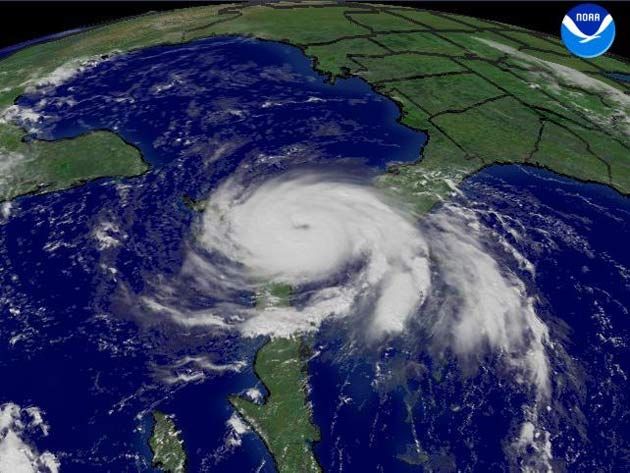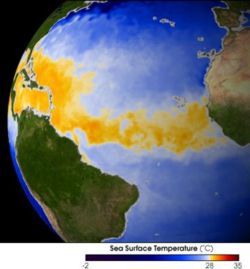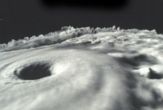Hurricane Alley Heats Up

Water temperatures in areas where hurricanes form in the Atlantic Ocean have warmed up over the past century and human activity could be the reason, scientists report.
To develop into a hurricane, a tropical storm needs its primary fuel—water—to be at least 80 degrees Fahrenheit (26.5 Celsius).
Previous studies suggest that warmer temperatures can fuel stronger storms. Long-term trends show that global ocean surface temperatures have warmed up in the past century, and that this is helping to create stronger hurricanes.
A hurricane spawning region in the Atlantic Ocean off the coast of Africa has experienced more extreme temperature variation than other areas, according to new computer simulations that tease out the long-term change from other known variations that can last decades.
The water temperature in this "hurricane alley" has risen several tenths of a degree Celsius over the 20th century.
"This very long-term increase in temperature may seem small but is comparable in magnitude to shorter time-scale, multi-decadal changes that many scientists now believe contribute strongly to an increase in hurricane activity in the Atlantic," said study team member Thomas Knutson, a meteorologist at the Geophysical Fluid Dynamics Laboratory in Princeton. The lab is run by NOAA, parent organization of the National Weather Service.
The finding, reported in the May 1 issue of the Journal of Climate, was made using models that incorporated environmental factors such as greenhouse gases, volcanic eruptions, solar variability and human-related factors such as land-use changes and fine particulate matter in the air.
Sign up for the Live Science daily newsletter now
Get the world’s most fascinating discoveries delivered straight to your inbox.
Such models that include human activity are more realistic than those that only take into account natural forces and effects.
"The challenge is to understand the relative roles of anthropogenic and natural factors in producing these temperature changes—and this study is a step in that direction—and then to determine whether and how these long-term changes in temperature could be affecting Atlantic hurricane activity," Knutson said.
Other hurricane experts have steadfastly contended that it is not possible to know if global warming has contributed to hurricane intensities.
Hurricane season begins June 1, and researchers predict another above-normal year of activity.
- Natural Disasters: Top 10 U.S. Threats
- Warmer Seas Creating Stronger Hurricanes
- Hurricane Image Gallery
- 2006 Hurricane Guide

The yellow and orange areas in this image from the summer of 2003 show warm water where hurricanes form. Africa is at the right, South America at bottom-left, and and the U.S. East Coast is in the upper-left.
Image: NASA

Hurricanes from Above
